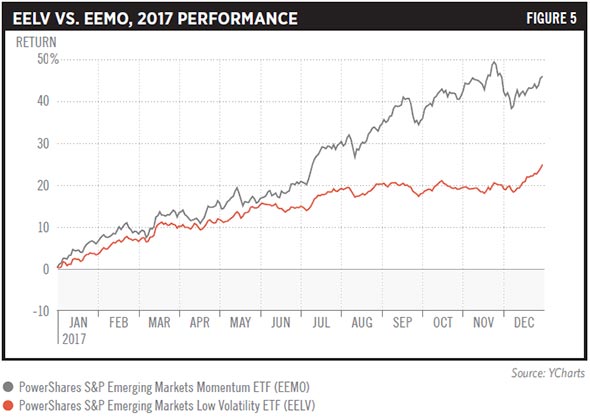[ad_1]
“Ahab sees Moby Dick’s spout in the distance …”
—Herman Melville
The investment banking whale, J.P. Morgan, has been lurking in the ETF waters for years, but it hasn’t made much of a splash as an ETF issuer. Until now.
As an ETF issuer, J.P. Morgan has only about $10.7 billion in assets under management, a pittance compared with the firm’s more than $2 trillion in total assets under management.
J.P. Morgan, as we’ve seen with other Wall Street titans of asset management, has had a tepid, toe-in-the-water approach to the ETF industry dominated by the Big Three: BlackRock (iShares), with $1.4 trillion in AUM; Vanguard ($918 billion); and State Street Global Advisors ($637 billion), according to ETF.com data provided by FactSet.
Take another example of a fellow Wall Street titan: Goldman Sachs. As an ETF issuer, Goldman Sachs has $8.8 billion in ETF assets under management, compared with its $1.5 trillion in total AUM.
Seemingly One & Done … Or Not
However, nearly three years ago, the firm undercut the smart-beta ETF market with the launch of the Goldman Sachs ActiveBeta U.S. Large Cap Equity ETF (GSLC), which offered factor exposure to large-caps for a paltry 0.09% expense ratio. The industry was abuzz that this was the start of an onslaught by a Wall Street whale, but it never materialized.
GSLC has taken in an impressive $3.6 billion in assets, but that’s nearly half of Goldman Sachs’ combined ETF assets across 15 ETFs. While GSLC’s big asset spout drew attention, Goldman Sachs as a threatening new whale has fallen below the surface.
To be fair, it’s not easy to get into the ETF industry as a newcomer these days. But don’t believe the narrative that big asset managers are reluctant to flood the ETF zone with their presence and sales muscle. Firms like J.P. Morgan get up very early in the morning to figure out how to get a piece of the $3.6 trillion ETF pie in the U.S. … as we have seen the last six weeks.
So, What’s The Big Deal?
In mid-June, J.P. Morgan launched two products under its new “BetaBuilder” ETF brand, a launch that’s in itself ironic considering that J.P. Morgan is well-known as an active manager, but it was now going back to passive with dirt-cheap prices.
The JPMorgan BetaBuilders Japan ETF (BBJP), along with its cousin product, the JPMorgan BetaBuilders Europe ETF (BBEU), garnered headlines for their ultra-low expense ratios. BBJP comes in at 0.19% expense ratio, seriously cheaper than the $17 billion iShares MSCI Japan ETF (EWJ)’s 0.49%. BBEU comes in at 0.09%, just below the $17 billion Vanguard FTSE Europe ETF (VGK), at 0.10%.
Whether assets would take the bait was unclear at the time. If nothing else, starting from scratch and taking on $17 billion products seemed like a tough current to swim against.
‘Thar She Blows’
The new “BetaBuilder” ETFs lay dormant for about a month, then in mid-July, the two started making waves, particularly the Japan fund. In less than two weeks, BBJP took in more than $1 billion in new assets (see ‘BBJP’ 2nd-Fastest ETF To $1B Assets), and currently has $1.56 billion.
Hot on its heels was the European equity fund, BBEU, which also started seeing heavy demand at the same time, capturing $380 million in less than two weeks. That nearly $2 billion in new assets now represents nearly 20% of J.P. Morgan’s $10.7 billion in total ETF assets under management.
But why should iShares jump to the bow and look through its long, nautical telescope and be concerned about this old-school whale making an ETF splash from nowhere? Because this could be the tip of an iceberg.
Is It Really About Japan?
What’s so hot about Japan and Europe that there’s such a sudden influx into these traditional pockets of basic diversification? Nothing, from my perspective, other than an asset manager moving client money into the firm’s new products, at the cost of competing products.
It may be simple conjecture, but since July 1, BBJP has taken in $1.52 billion in new assets as the guppy, while the big fish EWJ has lost $1.5 billion in assets in the same time. Consider that J.P. Morgan is the largest shareholder in EWJ, so it’s not hard to figure out what’s going on.

‘Bring You Own Assets’
As Bloomberg’s Eric Balchunas calls it, today’s successful launches come from what he calls “BYOA … bring your own assets.” Asset management firms like J.P. Morgan have an embedded client base that can be steered away from EWJ and into their own product. Cutting the expense ratio by more than half for similar coverage is an easy sell as well, especially coming from your established money manager.
Throw in media coverage about BBJP being the second-fastest-growing ETF in the U.S. ever, and assets begin begetting assets. Start with a notable BYOA and others will crash the party.
There are more J.P. Morgan “BetaBuilders” coming down the pipe soon, covering Asia Ex-Japan and Canada. Issuers with lead products in those areas might want to check and see how much J.P. Morgan money is in their funds.
Overall, J.P. Morgan has $78 billion invested in ETFs, both in its own and other products, such as iShares, according to Bloomberg. That leaves a potential $67 billion of other issuers’ assets that J.P. Morgan could reel in by launching similar products at lower prices on the course BBJP and BBEU have taken.
Drew Voros is Editor-in-Chief of ETF.com and can be reached at [email protected]
[ad_2]
Source link

